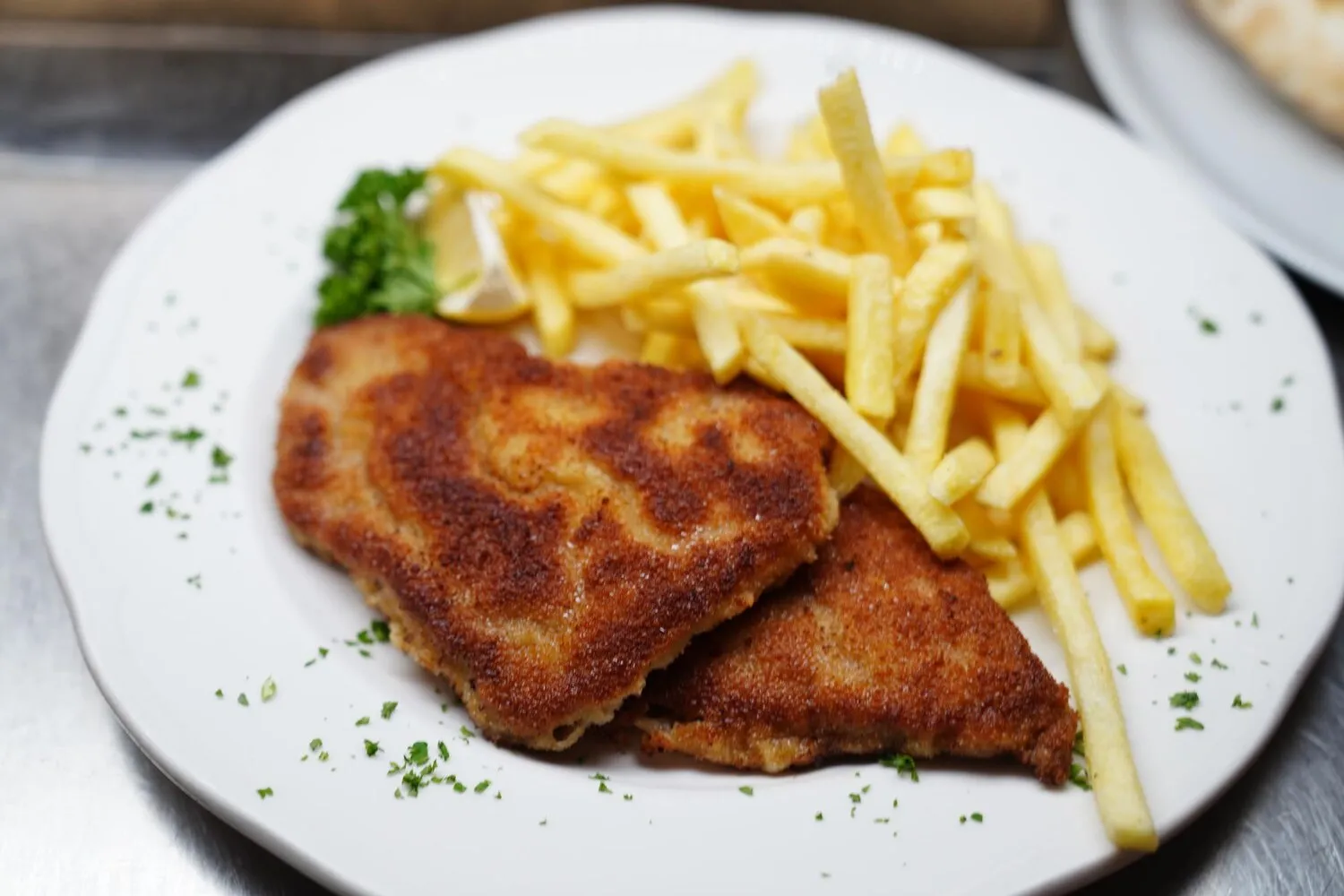
Rindsfilet im Kräutermantel
Beef fillet in a herb crust
Nutrition Facts
* The % Daily Value (DV) tells you how much a nutrient in a serving of food contributes to a daily diet. 2,000 calories a day is used for general nutrition advice.
The practice of coating meats with herbs and spices to enhance flavor and preserve them has ancient roots across Europe. While pinpointing the exact origin of 'Rindsfilet im Kräutermantel' is difficult, it likely evolved from similar techniques used in German and surrounding cuisines to elevate simple cuts of meat into more sophisticated dishes.
Rindsfilet im Kräutermantel is often associated with special occasions and celebratory meals in German culture. It represents a step up from everyday cooking, showcasing culinary skill and a dedication to quality ingredients.
Festive Occasions
This dish is commonly served during holidays like Christmas, Easter, or anniversaries, reflecting its status as a special and impressive meal.
Gastronomic Appreciation
It highlights the German appreciation for high-quality ingredients and careful preparation, showcasing a respect for both tradition and culinary innovation.
Regional Variations
While the basic concept remains consistent, regional variations may exist in the specific herbs used in the crust or the accompanying sauces.
Rindsfilet im Kräutermantel offers a harmonious blend of savory, earthy, and herbaceous flavors, creating a sophisticated and well-balanced culinary experience.
The primary flavor profile revolves around the rich, beefy taste of the Rindsfilet (beef tenderloin), which is known for its tenderness and subtle sweetness. The Kräutermantel (herb crust) introduces a complex layer of herbaceous notes, typically featuring a combination of herbs such as parsley, thyme, rosemary, and sometimes sage or chives. These herbs impart a fresh, aromatic quality that complements the beef without overpowering it. Garlic often forms a crucial part of the crust, providing a pungent and savory undertone. Depending on the recipe, Dijon mustard or other spices might be added to enhance the flavor profile further. The cooking method, typically searing and then oven-baking or roasting, results in a crust that is both crispy and flavorful, adding a textural contrast to the tender beef.
Quality of Beef
Use a high-quality cut of beef tenderloin. The better the quality of the beef, the more flavorful the final dish will be.
Herb Freshness
Fresh herbs are crucial for the best flavor in the crust. Dried herbs can be used as a substitute, but use less as their flavor is more concentrated.
Searing Technique
Sear the beef on all sides before applying the herb crust. This helps to seal in the juices and create a flavorful crust.
Internal Temperature
Use a meat thermometer to ensure the beef is cooked to your desired doneness. For medium-rare, aim for an internal temperature of 130-135°F (54-57°C).
Resting Time
Allow the beef to rest for at least 10 minutes after cooking before slicing. This allows the juices to redistribute, resulting in a more tender and flavorful piece of meat.
Explore additional European dishes and restaurants
Explore EuropeanDiscover top dining spots and culinary experiences in Bern.
Explore BernLearn more about the food culture, restaurant scene, and culinary heritage of Switzerland.
Explore Switzerland